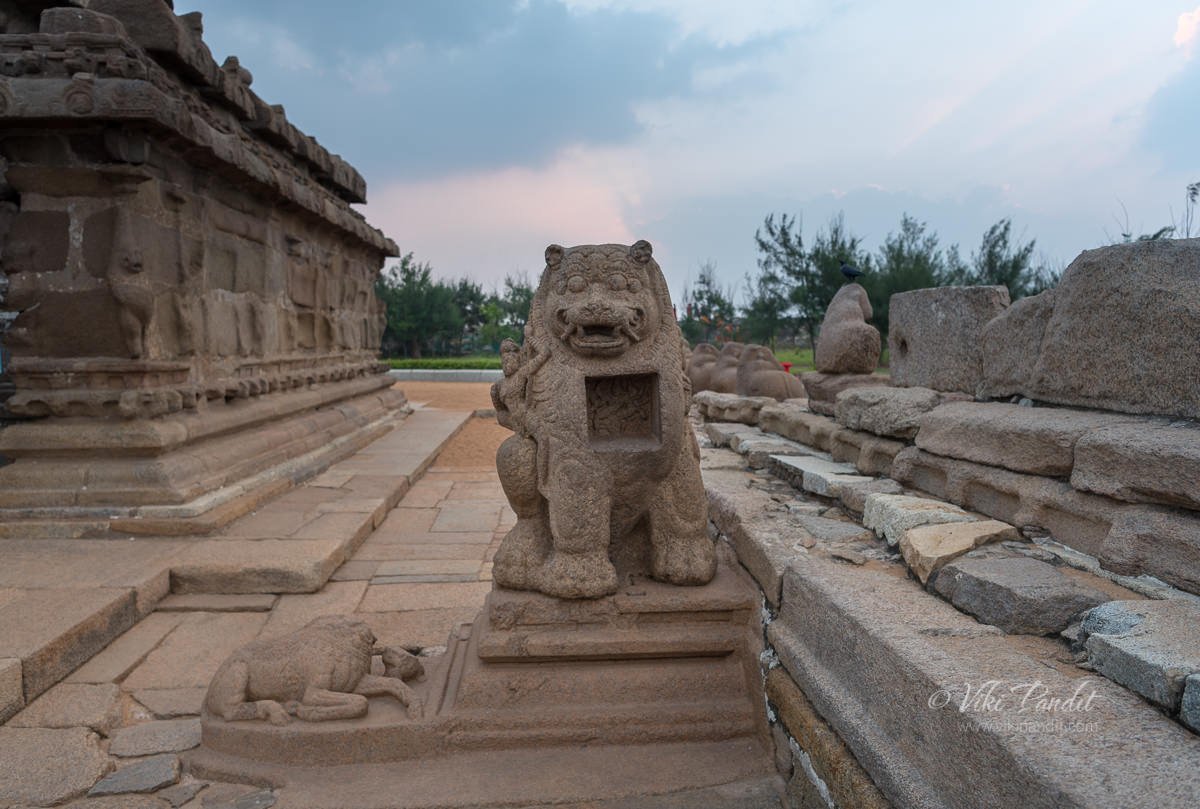It is a structural temple, built by Narasimhavarman II, Rajasimha with blocks of granite, during 700 - 728 AD. At the time of its creation, the site was a busy port during the reign of Narasimhavarman II of the Pallava dynasty. It is one of the oldest structural stone temples in South India. This is one of the most loved and revered temples of India and looks magically beautiful particularly for, it is located on the shores of the Bay of Bengal. For the beauty and splendour of the temple, it has also been recognised and listed under UNESCO among one of the world heritage sites of India.
Significance of Shore Temple:
The temple is dedicated to worshipping both Lord Shiva and Lord Vishnu and has been built to have three shrines. The most significant of the three shrines has been dedicated to Lord Shiva and Lord Vishnu. There is a Shivalingam in the Grabhagriha which looks as if it is embracing the temple amiably and spreading its incredulous magnificence. At the back of the temple, there are these two shrines both of which faces each other and among both of these shrines one is dedicated to Lord Vishnu and the other one manifests the grandeur of Ksatriyasimnesvara. Seshanag who has in the Hindu religion been considered as the symbol of realization has been depicted with the image of Lord Vishnu. Lord Vishnu has been showcased recycling the Seshanag.
The peripheral walls of the shrine as well as the interior of the boundary walls which has been dedicated to Lord Vishnu have been ornately sculptured and carved. The sculptural and the artistic work on the walls of the temple gives an amazing and realistic feeling by manifesting few really heart-warming scenes from our everyday life. The lower part of the exterior walls has been impressed with a large number of lions.
On the southern side of the temple facing west is a large monolithic lion, often termed as the Durga’s lion, as the Devi is seen sitting on its right hind leg holding a bow in her hand. The lion’s chest has been cut to form a deep square niche, inside which we see Devi Durga as Mahisasuramardini. Near the pedestal is a beautifully carved figure of couchant deer, which is now headless.
The entrance walls of the temple hold many carved panels, some of which show scenes from the Pallavan history, while others depict Shiva in his various forms, such as the Tripurantaka, Kiritarjuna, Dakshinamurti, etc. The outer walls have inscriptions from the Pallava and Chola eras that praise king Narasimhavarman II, and names the deities inside.
The shore temple in its essence is fundamentally a piece of art that was built as a result of the artistic insight of the Pallavas. The historical evidence shows that Pallavas were fanatically involved in artistic work and were keen to put in their aesthetic values in building a temple with their own artistic style. The temple is also famous for showcasing the great dance traditions of Mahabalipuram and is organized in the month of January and February.
Shore Temple Now:
ASI has constructed a break-water wall all around the seashore to save the temple from further damage. The temple structures, affected by rough Seas and winds with salt content are being conserved by the Archaeological Survey of India by building protective groynes, treatment with wallpaper pulp, and planting casuarina trees along the affected coastline. The pulp treatment absorbs the saline water. In addition, chemical treatment is also given to the monument to prevent water seepage into the rock. This kind of treatment is also reported to take out water stored inside the rock thus allowing the stone to breathe and preserve its strength. The area around the Shore Temple has been beautified. The horticulture wing of the ASI has created a green lawn of 11 acres (4.4 hectares) around the Shore Temple. Fixing of signages with information on the monuments and creating fountains was also part of the beautification programme planned by ASI.
How to Reach this Shore Temple:
One can easily reach Shore Temple by taking regular Buses or by hiring Taxis from anywhere in Tamil Nadu. The nearest airport is located in Chennai that lies at a distance of 60 km from Mahabalipuram.





5 Comments
Super👏👏👏
ReplyDeleteSuper....our nearby place.
ReplyDeleteWonderful information. Dear
ReplyDeleteWonderful ����
ReplyDeleteAmazing������
Extraordinary ����
Good information sister
ReplyDeletePost a Comment
Thank You So much for ur Comments